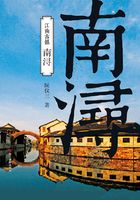
概况
江南水乡主要是指长江下游南面的苏南、浙北一带地区。这里土地肥沃、气候温和、物产丰富,自古就有先民在此聚居,千百年来,逐渐形成了许多村落和乡镇。这些乡镇依河而建,因水成街,因水成市,形成了精巧独特的建筑布局,镇上粉墙黛瓦,小桥流水,老街深巷,洋溢着浓郁的江南乡土气息,构成了一种独特的地域文化景观。因地理人文环境的差异,各镇又各有自己的特色。20世纪80年代以来,中国农村经济迅速发展,大多数历史古镇经历了现代建设的改造,基本失掉了原来的风貌。值得庆幸的是,浙江省的乌镇、南浔、西塘和江苏省的周庄、同里、甪直等古镇得到了及时的保护。近年来,这些古镇又在专家的指导下进行了合理的整治,较完整地保存了原汁原味的历史风貌,成为人类珍贵的文化遗产。
南浔,属浙江省湖州市,地处太湖南岸,与苏南吴江紧邻。南浔自古就是“江浙雄镇”,南宋时已“耕桑之富,甲于浙右”,明清时更是趋于兴盛,近代以来成为中国重要的蚕丝产销地,涌现了中国近代史上最大的丝商群体,对江南乃至全国的社会经济产生了巨大的影响。
一条市河穿镇而过,古老的拱桥,整齐的驳岸,绿柳迎风,街河映波,夹河的小街,依水的民居……最有风情的是镇东的百间楼,这是明代董份的家眷住处,沿河百十间民居临水而筑,顺河弯曲,一道道耸起的山墙,一重重圆拱的过街券门,一排排沿河的排柱廊檐,一座座河埠石阶,灰屋顶、白粉墙、木门扇,倒映在水波之中,是一幅精致的水上人家画卷。
南浔不单外美,而且内秀,历来崇文重教。这里出了不少名人雅士,曾有“九里三阁老,十里两尚书”之谚。这里还多藏书家,辟室藏书各有专名,其中聚书最多者为“嘉业堂”,一直保存至今,其中藏有许多珍贵书籍和木刻书版。南浔的不少名宅大院建筑气势宏伟、中西合璧、装饰精良,世所罕见。

南浔的夜晚,格外生动(马俊 摄)
南浔还是个园林之镇,清代最盛时有园林26座之多,冠盖全国,现尚存有小莲庄、颖园等,基本保持原貌。
主要景点:百间楼、小莲庄、颖园、张石铭宅、张静江宅、嘉业堂藏书楼、求恕里、刘氏梯号、古石桥。
The Canal Towns in Jiangnan Area mainly refer to the old towns which lie at the lower reaches of the Yangtze River in the south of Jiangsu Province and north of Zhejiang Province, and endowed with fertile land,mild climate and rich produce, this area was inhabited by primitive people many thousand years ago. Natural villages and towns have formed along small rivers, comprising exquisitely unique architectural layout. The towns feature white walls and dark tiles, small bridges and streams, old streets and long lanes. Local color constitutes a unique regional cultural landscape. These towns vary in style due to different geographic and cultural environments. Since 1980s, most of the ancient towns have been modernized with the takeoff of China’s rural economy, losing the original framework. Fortunately, Nanxun, Wuzhen and Xitang in Zhejiang Province and Zhouzhuang, Tongli and Luzhi in Jiangsu Province have been timely preserved. In recent years, these old towns have been renovated under the guidance of experts. With original historic features, they are becoming the common heritage of our human race.
Nanxun is situated to the south of Taihu Lake in Zhejiang, bordering on Jiangsu Province. It has been well known since a thousand years ago for its farming and especially unique silk farming, and became a major producer and trading port of silk in modern times. It hosted the largest community of silk traders in Chinese history, exerting tremendous influence on China’s socioeconomic development.
A river running cross this town, ancient arch bridges, well-aligned banks,green willows, narrow streets and riverside homes... The most interesting is the Hundred-Room Residence in the east, which was the home of Mr. Dong’s family in the Ming Dynasty, with high walls and repeated archways, eaves and steps, built along the meandering river. What a fine picture of water home with roofs, walls and wooden doors mirrored in the river.
Nanxun is not only beautiful, but also elegant, since it emphasized education all these years in its history, and the town saw many famous scholars and high officials. There were also distinguished libraries, notably Jiaye Library with its huge collection. Even today, we can still see many rare books and woodcut stereotypes. Nanxun also boasts many gardens,including Little Lotus Villa, Ying Garden kept in their original layout, and famous mansions exguisitely integrating Chinese and western architecture.
Major places of interest: Hundred-Room Residence, Little Lotus Villa,Ying Garden, Home of Zhang Shiming, Home of Zhang Jingjiang, Jiaye Library, Qiushuli Place, Home of Liu Tiqing and Ancient Stone Bridges.